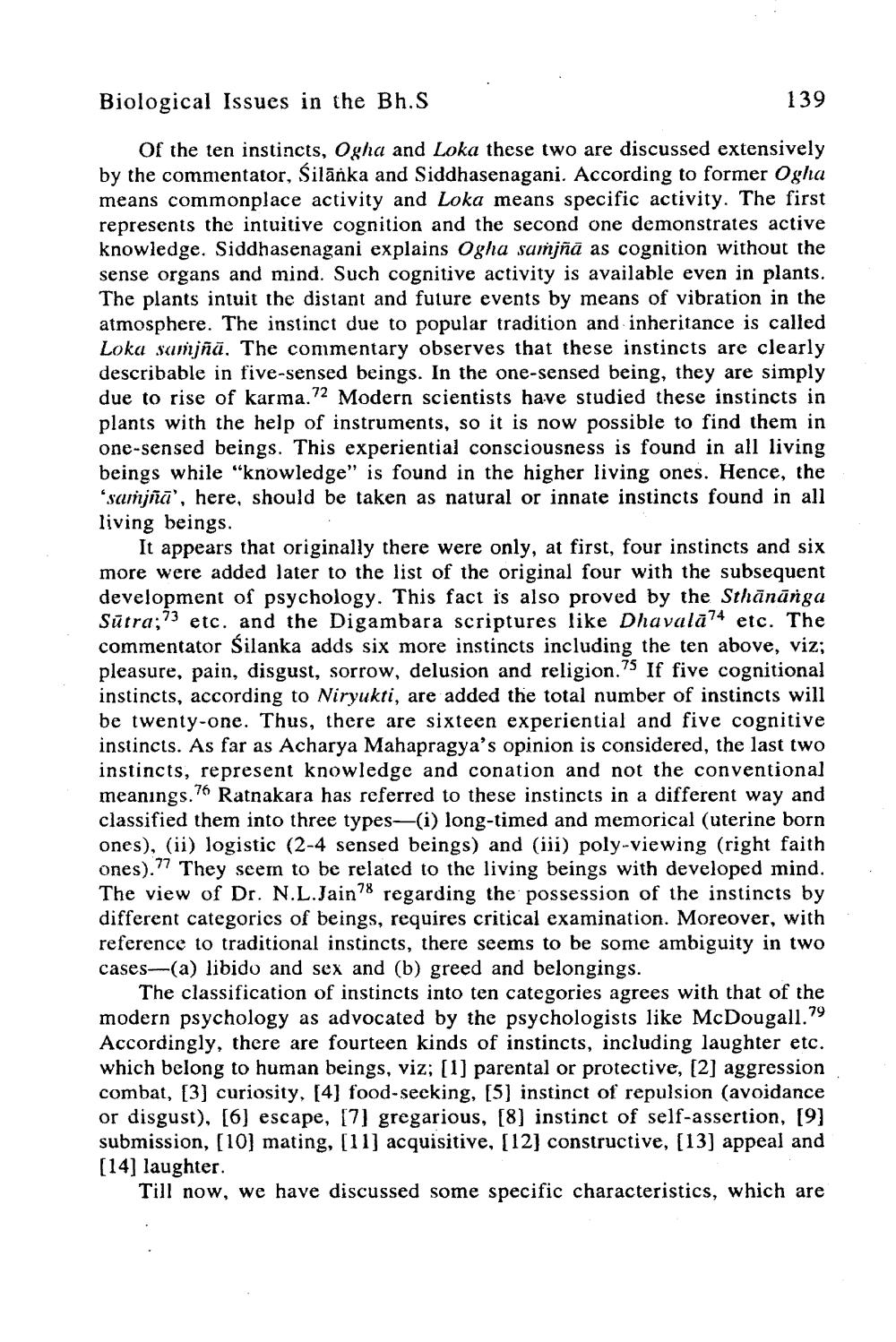________________
Biological Issues in the Bh.s
139
of the ten instincts, Ogha and Loka these two are discussed extensively by the commentator, Silānka and Siddhasenagani. According to former Ogha means commonplace activity and Loka means specific activity. The first represents the intuitive cognition and the second one demonstrates active knowledge. Siddhasenagani explains Ogha samjñā as cognition without the sense organs and mind. Such cognitive activity is available even in plants. The plants intuit the distant and future events by means of vibration in the atmosphere. The instinct due to popular tradition and inheritance is called Loka samjñā. The commentary observes that these instincts are clearly describable in five-sensed beings. In the one-sensed being, they are simply due to rise of karma.72 Modern scientists have studied these instincts in plants with the help of instruments, so it is now possible to find them in one-sensed beings. This experiential consciousness is found in all living beings while "knowledge" is found in the higher living ones. Hence, the
samiña', here, should be taken as natural or innate instincts found in all living beings.
It appears that originally there were only, at first, four instincts and six more were added later to the list of the original four with the subsequent development of psychology. This fact is also proved by the Sthānānga Sūtra;73 etc. and the Digambara scriptures like Dhavalā74 etc. The commentator Silanka adds six more instincts including the ten above, viz; pleasure, pain, disgust, sorrow, delusion and religion.75 If five cognitional instincts, according to Niryukti, are added the total number of instincts will be twenty-one. Thus, there are sixteen experiential and five cognitive instincts. As far as Acharya Mahapragya's opinion is considered, the last two instincts, represent knowledge and conation and not the conventional meanings.76 Ratnakara has referred to these instincts in a different way and classified them into three types—(i) long-timed and memorical (uterine born ones), (ii) logistic (2-4 sensed beings) and (iii) poly-viewing (right faith ones).77 They seem to be related to the living beings with developed mind. The view of Dr. N.L.Jain78 regarding the possession of the instincts by different categories of beings, requires critical examination. Moreover, with reference to traditional instincts, there seems to be some ambiguity in two cases-(a) libido and sex and (b) greed and belongings.
The classification of instincts into ten categories agrees with that of the modern psychology as advocated by the psychologists like McDougall.79 Accordingly, there are fourteen kinds of instincts, including laughter etc. which belong to human beings, viz; (1) parental or protective, [2] aggression combat, [3] curiosity, [4] food-seeking, (5) instinct of repulsion (avoidance or disgust), [6) escape, [7] gregarious, [8] instinct of self-assertion, [9] submission, (10) mating, [11] acquisitive, [12] constructive, (13) appeal and [14] laughter.
Till now, we have discussed some specific characteristics, which are
"mgs.




